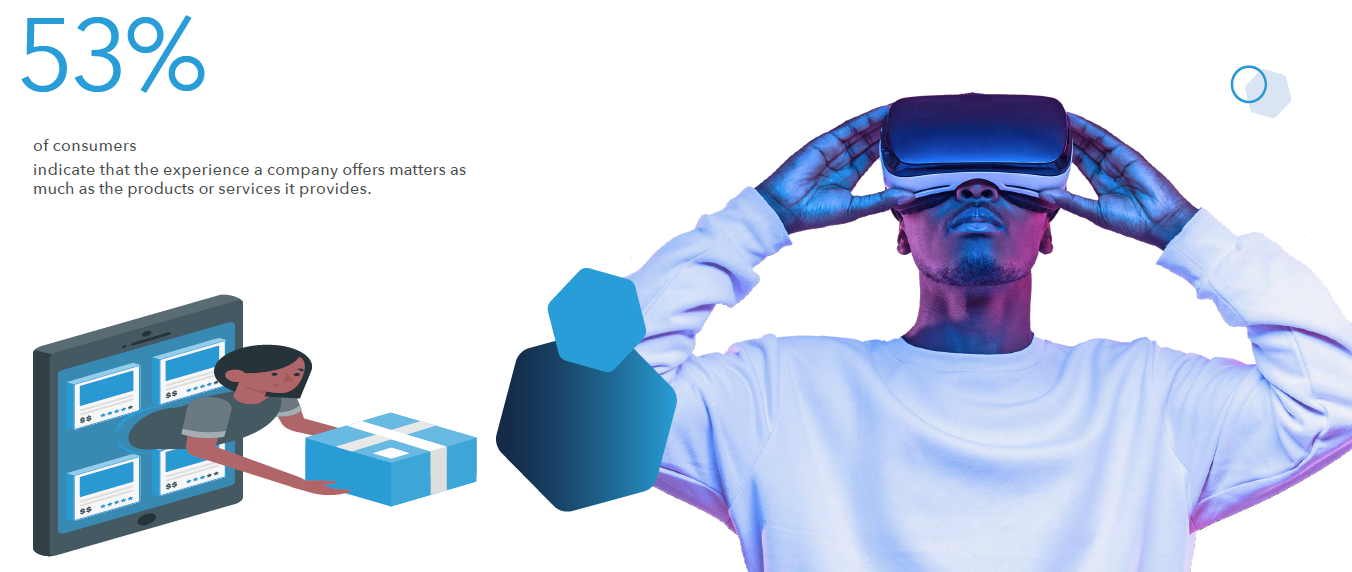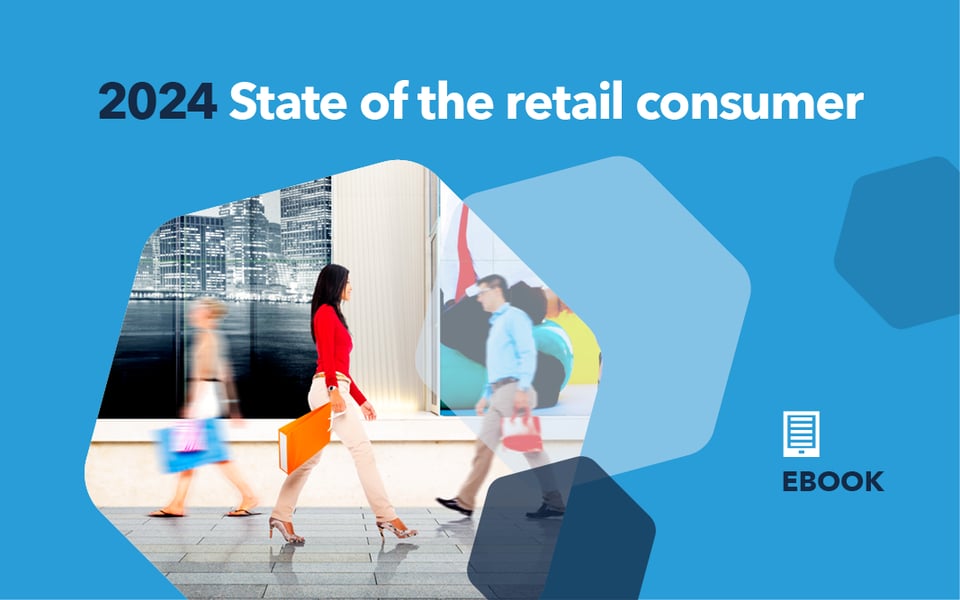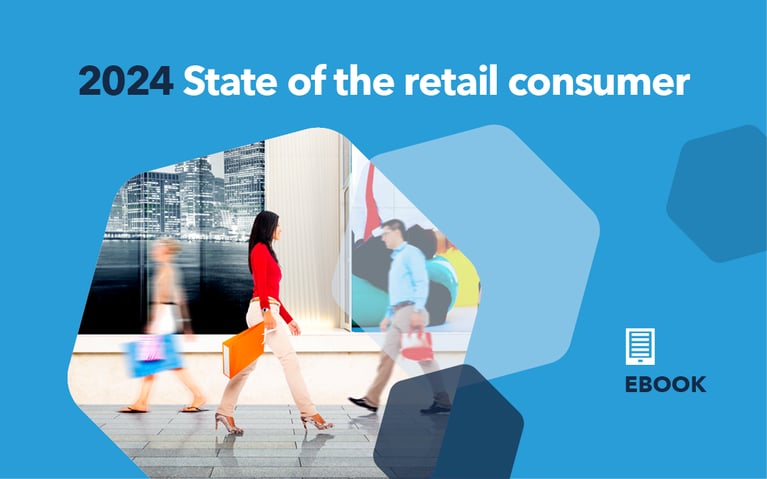This is an excerpt from Cart.com’s newest eBook “2024 State of the retail consumer,” an in-depth look at the consumer mindset, spending, trends, behaviors, desires and more – and best practices and strategies to engage customers. Check out the full eBook here.
Part 1: The retail outlook for 2024
 The retail industry is transforming rapidly, driven by shifting consumer behaviors, technological advancements and evolving market dynamics. With the rise of ecommerce and omnichannel retailing, traditional brick-and-mortar stores face increasing competition and pressure to innovate. Despite supply chain disruptions and some economic uncertainty, there are opportunities for growth and adaptation. Forward-thinking retailers are embracing digitalization, leveraging data analytics and prioritizing the customer experience to stay competitive in the ever-changing market. As the industry continues to evolve, collaboration, agility and resilience will be vital to successfully navigating the future of retail.
The retail industry is transforming rapidly, driven by shifting consumer behaviors, technological advancements and evolving market dynamics. With the rise of ecommerce and omnichannel retailing, traditional brick-and-mortar stores face increasing competition and pressure to innovate. Despite supply chain disruptions and some economic uncertainty, there are opportunities for growth and adaptation. Forward-thinking retailers are embracing digitalization, leveraging data analytics and prioritizing the customer experience to stay competitive in the ever-changing market. As the industry continues to evolve, collaboration, agility and resilience will be vital to successfully navigating the future of retail.
2024 Retail trends and predictions
Trends and predictions are pivotal in shaping retail brand strategies, offering insights into consumer preferences, market shifts and emerging opportunities. By closely monitoring and analyzing industry trends, retail brands can anticipate changes in consumer behavior and adapt their strategies accordingly. Leveraging these insights enables brands to stay ahead of the curve, innovate their offerings and effectively position themselves in the competitive retail landscape.
Here are some of the trends and predictions to monitor throughout 2024:
Artificial intelligence (AI)
There has been a lot of conversation around AI. Will it help businesses succeed? Will it take human jobs? Will it be our doom? Whatever your feelings about AI, it is here and in use in the retail industry. And it has both positive and negative implications.
 Starting with the good: According to the National Retail Federation (NRF), “AI is blowing the lid off constraints businesses once had and making faster and more precise decision making a reality.”1 Research shows that the retail industry ranks second for AI spending.2 Brands are integrating AI into marketing, fulfillment, customer experience (CX) strategies and more. It’s often used to:
Starting with the good: According to the National Retail Federation (NRF), “AI is blowing the lid off constraints businesses once had and making faster and more precise decision making a reality.”1 Research shows that the retail industry ranks second for AI spending.2 Brands are integrating AI into marketing, fulfillment, customer experience (CX) strategies and more. It’s often used to:
- Sift through and analyze large amounts of disparate data
- Facilitate decision-making and reduce human error
- Automate labor-intensive and/or monotonous tasks
- Demand forecasting
- Provide better visibility into inventory, the supply chain and more
- Personalizing along the customer journey
- Optimizing store and warehouse layout
- Anti-theft and security
The biggest concern has been whether AI will displace humans. However, many retailers feel it will allow people to return to creativity and innovation. Another issue generating uneasiness are deepfakes. Deepfakes can potentially ruin a brand’s reputation or erode trust through disinformation and fraud.
Overall, AI can be leveraged in positive ways for retailers and consumers. It can enhance customer engagement and personalized experiences and improve operational efficiency and cost savings. By leveraging AI-powered tools and algorithms, retailers can gain deeper insights into consumer preferences, predict trends and optimize inventory management and pricing strategies. Ultimately, AI empowers retailers to stay competitive in today’s fast-paced market, driving growth, retention and loyalty while delivering exceptional value to customers.
Hyper-personalization
Hyper-personalization tailors content, products and services to individual preferences and behaviors on a granular level. By analyzing vast amounts of customer data, including demographics, past purchases and online interactions, brands can create highly targeted and relevant experiences for each customer. This goes beyond traditional personalization techniques by delivering real-time, contextually relevant content and recommendations across multiple channels. Hyper-personalization aims to foster deeper customer engagement and increase conversion rates, ultimately driving customer satisfaction and loyalty. It allows brands to anticipate customer needs and actions to provide seamless and customized experiences throughout the customer journey.
While hyper-personalization is becoming a crucial implementation for brands, it must be balanced with privacy and data protection. Customers want clarity and assurance before providing information: 62% of consumers require clear information on how their data will be used.2 Loyalty can suffer when the personal information consumers share is compromised.
Circularity
Consumers have become more conscious about waste, whether its old electronics, clothing or other items. 76% believe it’s very or extremely important that companies increase the amount of recycled materials they use to make clothing and apparel,3 and many would like to see electronics recycled to recover the valuable materials they contain for reuse. This type of thinking highlights circularity: Retail circularity is closing the loop on the product lifecycle by promoting sustainability and reducing waste through practices such as recycling, refurbishing and resale. In essence, it’s extending the lifespan of products, minimizing environmental impact and maximizing resource efficiency within the retail industry. By embracing circularity, retailers contribute to a more sustainable future while meeting consumer demand for eco-friendly and socially responsible products and practices.
AR/VR and the Meta-verse
Technology continues to push new advances our way. Facebook launched Meta in 2021, IKEA and Sephora have developed AR apps to optimize the customer shopping experience and the recently released Apple Vision Pro self-describes as “seamlessly blending digital content with your physical space.” While not everything AR/VR has virally caught on, it’s still there, simmering below the surface. And retailers and consumers aren’t ready to write it off yet.
Big players like Meta (and their Ray-Ban smart glasses), Apple and Samsung are renewing interest in augmented and virtual reality technologies. In turn, shoppers and companies are looking for ways to use it. It’s a trend for retailers to watch – AR and VR present opportunities to revolutionize the shopping experience by offering immersive and interactive environments for consumers to explore products virtually. Retailers can use these technologies to enhance engagement, drive sales and differentiate themselves in the competitive market by providing unique and memorable moments.
The customer experience
Customers recognize the value of experience, with 53% of consumers4 indicating that the experience a company offers matters as much as the products or services it provides. Brands can’t treat CX as an afterthought – but rather, they must assess the customer journey from discovery to delivery and optimize it to boost growth, retention and loyalty. Today’s customer experience requires spanning channels, creating a cohesive and recognizable experience that allows consumers to move between the digital and physical realms seamlessly.
Brands that follow and embrace up-and-coming demands and trends are better equipped to build effective strategies. Agility is critical to resilience and growth, and a key characteristic for businesses to adopt in 2024.
Want to learn more? Check out the rest of our eBook about the current state of the 2024 retail consumer – along with strategies and best practices to amplify your customer experience.
References:
Subscribe to our emails for the latest industry insights!
By entering your email, you agree to receive marketing emails from Cart.com









